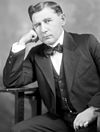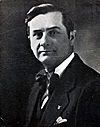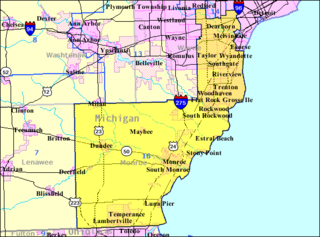List of members representing the district
After the 1870 census, a second seat was apportioned to Florida. Briefly, for the 43rd Congress, a second at-large seat was used. After that, there were two geographic districts created.
| Years | Cong ress | Seat A | Seat B | ||||
|---|---|---|---|---|---|---|---|
| Member | Party | Electoral history | Member | Party | Electoral history | ||
| July 1, 1845 – October 6, 1845 | 29th | Vacant | Representative-elect David Levy Yulee declined to serve after his election to the U.S. Senate. | Seat inactive | |||
| October 6, 1845 – January 24, 1846 |  Edward C. Cabell (Tallahassee) | Whig | Elected to fill Levy Yulee's term. Lost contested election. | ||||
| January 24, 1846 – March 3, 1847 | William Henry Brockenbrough (Tallahassee) | Democratic | Successfully contested election. [ data missing ] | ||||
| March 4, 1847 – March 3, 1853 | 30th 31st 32nd |  Edward C. Cabell (Tallahassee) | Whig | Elected in 1846. Re-elected in 1848. Re-elected in 1850. Lost re-election. | |||
| March 4, 1853 – March 3, 1857 | 33rd 34th |  Augustus Maxwell (Tallahassee) | Democratic | Elected in 1852. Re-elected in 1854. Retired. | |||
| March 4, 1857 – January 21, 1861 | 35th 36th |  George S. Hawkins (Pensacola) | Democratic | Elected in 1856. Re-elected in 1858. Re-elected in 1860. Withdrew ahead of secession. | |||
| January 21, 1861 – July 1, 1868 | 36th 37th 38th 39th 40th | Vacant | U.S. Civil War | ||||
| July 1, 1868 – March 3, 1871 | 40th 41st |  Charles M. Hamilton (Jacksonville) | Republican | Elected in 1868. Lost renomination. | |||
| March 4, 1871 – January 29, 1873 | 42nd |  Josiah T. Walls (Gainesville) | Republican | Lost contested election. | |||
| January 29, 1873 – March 3, 1873 |  Silas L. Niblack (Gainesville) | Democratic | Successfully contested election. Lost re-election. | ||||
| March 4, 1873 – January 25, 1875 | 43rd |  William J. Purman (Tallahassee) | Republican | Elected in 1872. Resigned. |  Josiah T. Walls (Gainesville) | Republican | Elected in 1872. Redistricted to the 2nd district . |
| January 25, 1875 – March 3, 1875 | Vacant | ||||||
| March 4, 1875 – March 3, 1913 | 44th 45th 46th 47th 48th 49th 50th 51st 52nd 53rd 54th 55th 56th 57th 58th 59th 60th 61st 62nd | Seat inactive | Seat inactive | ||||
| March 4, 1913 – March 3, 1915 | 63rd |  Claude L'Engle (Jacksonville) | Democratic | Elected in 1912. Lost renomination. | |||
| March 3, 1915 – March 3, 1933 | 64th 65th 66th 67th 68th 69th 70th 71st 72nd | Seat inactive | |||||
| March 4, 1933 – January 3, 1937 | 73rd 74th |  William J. Sears (Jacksonville) | Democratic | Elected in 1932. Re-elected in 1934. Lost renomination. | |||
| January 3, 1937 – January 3, 1943 | 75th 76th 77th | Seat inactive | |||||
| January 3, 1943 – November 25, 1944 | 78th |  Robert A. Green (Starke) | Democratic | Redistricted from the 2nd district and re-elected in 1942. Resigned to join the U.S. Navy. | |||
| November 26, 1944 – January 3, 1945 | Vacant | ||||||
| January 3, 1945 | Seats eliminated | ||||||



